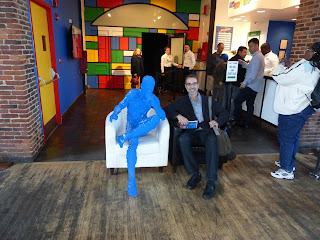Play, Symbol & Festival in Worship Design
by Dr. David H. Pereyra, OCAD University & St Michael’s College University
The German philosopher, Hans-Georg Gadamer throughout his work asserts, “The experience of the beautiful in art is a form of knowing.” To confirm this argument, he works on three basic concepts of his philosophical aesthetics: “play,” “symbol,” and “festival.” In this presentation Pereyra will explore the application of those concepts to the design of Christian churches. Sacred spaces are capable of moving and transforming us because of their particular language of beauty. He will argue that by designing a sacred space with Gadamer’s concepts of play, symbol, and festival in mind, we can enhance our knowledge of beauty through the art of liturgical design. He will explain Gadamer’s three concepts, describe how they can applied to the design of Christian churches, and consider their potential effects. The reality of beauty, as a transcendental quality of being, invites one to enter the world of contemplation wherein beauty gives herself freely and without personal regard. The beauty of the liturgy and the place where it is celebrated must converge in an experience that transforms worship space into Sacred Space.
David
H. Pereyra is a seasonal professor at the Faculty of Theology at the
University of St Michael’s College in Toronto, and the coordinator of the
Liturgy Seminar, at the Toronto School of Theology, University of Toronto. He
has a degree as an architect at the University of Buenos Aires, a Master in
Arts in Theology, and a degree of Doctor in Philosophy of Theology, both at the
University of St Michael’s College. For
several years he has been a lecturer of Church Design at the Catholic
University in Buenos Aires, Argentina. He has presented his work in
international conferences in Argentina, Austria, Belgium and United States.
Right now, he works at the Inclusive Design Research
Centre, at Ontario College of Art University in Toronto (OCAD U). His research examines
inclusivity and accessibility throughout welcoming space.











